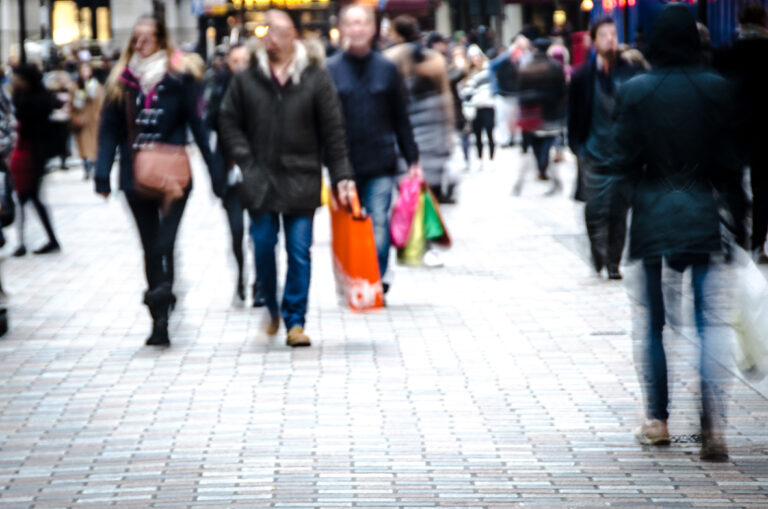Footfall rose by just +1.3% across UK retail destinations last week from the week before, after a decline of -7.5% following the school half term in the week before last, according to Springboard. The company said this modest increase indicates consumer nervousness in the midst of the cost-of-living crisis and rising interest rates, as under normal trading conditions a larger spike would be expected.
The week was highly polarised with drops on both Sunday and Monday that averaged -9.4%, followed by a modest rise of +1.9% from Tuesday to Friday. Over the working week, the greatest increase of +5% occurred on Wednesday, which was more than twice the rise of any other day during the five-day period. This reflects the findings of Springboard’s Retail Consumer Survey which identified that Wednesday is the most popular day for office working and Monday and Friday the least popular.
Footfall rose by +2.1% in high streets and by +0.9% in shopping centres while remaining flat from the week before in retail parks. The rise in footfall in high streets and shopping centres occurred across the majority of UK geographies, with just Wales recording a decline, of -2.6% in high streets and -14.6% in shopping centres, and a drop in high street footfall of -10.7% in Northern Ireland.
Footfall last week was just +5% above the 2021 level with the gap from 2019 widening to -11.1% from -9.8% in the week before last. The gap from 2019 in shopping centres of -17% remains larger than the gap of -12.4% in high streets. Whilst footfall in retail parks last week was flat from the week before, the gap from 2019 was just -2.1%.
Diane Wehrle, insights director at Springboard, said: “Following a large decline in footfall in the week before last, last week footfall in UK retail destinations rose only marginally. Under normal trading conditions we would expect footfall to bounce back in the week following a decline however, the modest uplift last week is a clear indicator of the increasing cautiousness of consumers in terms of making trips and spending.
“The results also indicate the change in consumer behaviour that is starting to become evident as consequence of hybrid working, with the weekend increasing in significance for shopper activity. Footfall over the working week rose last week, however, the increase only partially made up for the drop in activity in the previous week. The largest rise over the Monday to Friday period last week occurred on Wednesday, reflecting our insights that identifies Wednesday as the most popular day for office working and Monday and Friday the least popular. Over the weekend, the double digit rise in footfall was more than twice the magnitude of the decline in the week before last, suggesting that consumers delayed trips to destinations until the weekend which prior to hybrid working may have been taken during the working week.
“Of the three key destination types, it was high streets where footfall rose the most, with only a very slight uplift in shopping centres whilst footfall in retail parks remained flat from the week before last. Footfall rose in high streets and shopping centres across the majority of UK geographies but increased in retail parks in only three UK areas.”


